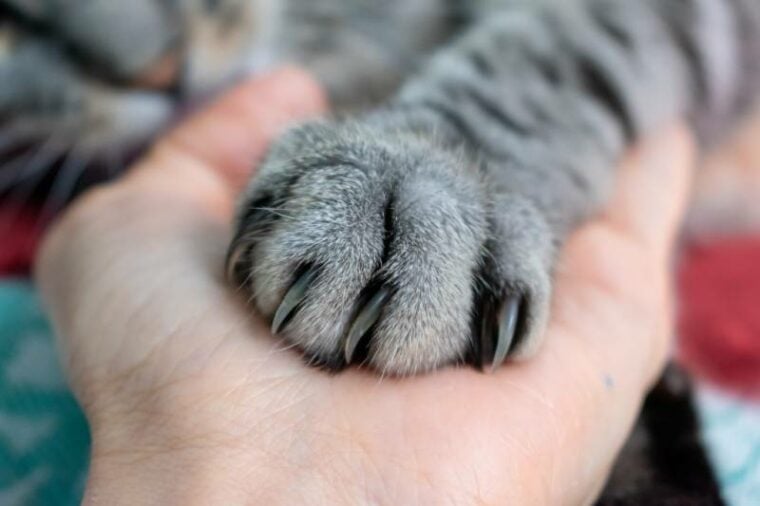
Click to Skip Ahead
You have a new cat, and they’re clawing up everything: your couches, carpets, and drapes all appear to be fair game. You make an appointment with your veterinarian to ask about declawing your cat. You are surprised to learn that they don’t perform the procedure. This is often because your cat’s nails aren’t just a fingernail like you have. The nails actually make up the end of their toes. Taking off your cat’s claws would be like cutting off the tips of your fingers at the last knuckle.
Let’s look at why we don’t recommend declawing cats and what some alternatives are to declawing.
The Dangers of Declawing Your Cat
Onychectomy is the surgical term for declawing cats. There are a few techniques for performing this procedure, with the guillotine method the most traumatic. In addition to taking off a bone when your cat is declawed, part of the pads may be removed, and sometimes even the adjacent bone is accidentally damaged.
You’ll find several potential dangers associated with declawing your cat.
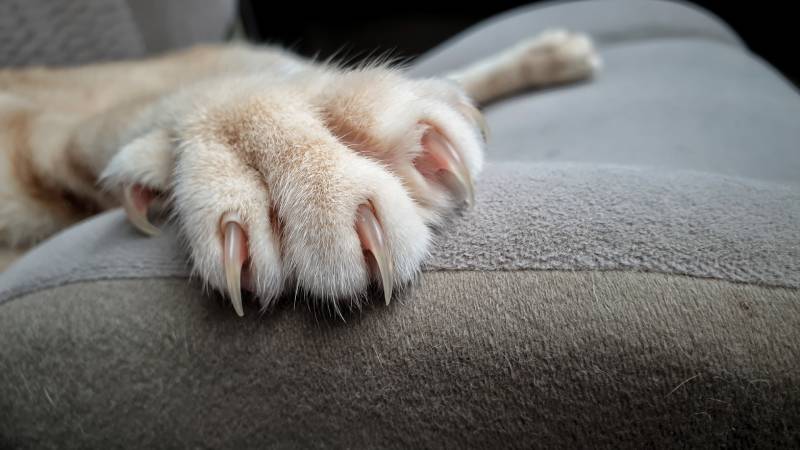
1. Chronic Pain
As you can imagine, your cat may experience chronic pain due to declawing. The surgery can damage nerve endings in the paws, and trauma to the adjacent bone can also lead to chronic pain.
Many veterinary hospitals will use nerve blocks in addition to pain medication to give your cat the best pain control possible. However, those nerve blocks do wear off after a few hours and can still leave your cat in pain.
Unfortunately, there aren’t many pain options for cats. Onsior is a commonly used non-steroidal anti-inflammatory for cats, but you can only use it for three days in the United States, according to its label. Meloxicam is another option, but it may have a higher risk of causing irreversible damage to your cat’s kidneys, so many hospitals don’t use it in cats. Gabapentin can be effective for nerve-related pain but doesn’t have anti-inflammatory effects.
Your vet will likely use a tourniquet to help control bleeding when a veterinarian performs a declaw procedure. This device can lead to nerve trauma and even paralysis.
2. Infections
Your cat’s paws are in constant contact with the ground. When your cat has surgery on their paws, they don’t get much of a break from walking during their recovery. Continuous contact with the ground and litter boxes increases their risk of infections in the surgical sites on their paws.
While the declawing sites are generally closed with tissue glue or suture, they can still become contaminated. Your veterinarian might suggest a litter with less chance of irritating the paws, such as Yesterday’s News cat litter, but their paws will still be subject to the bacteria and other debris found in a litter box.
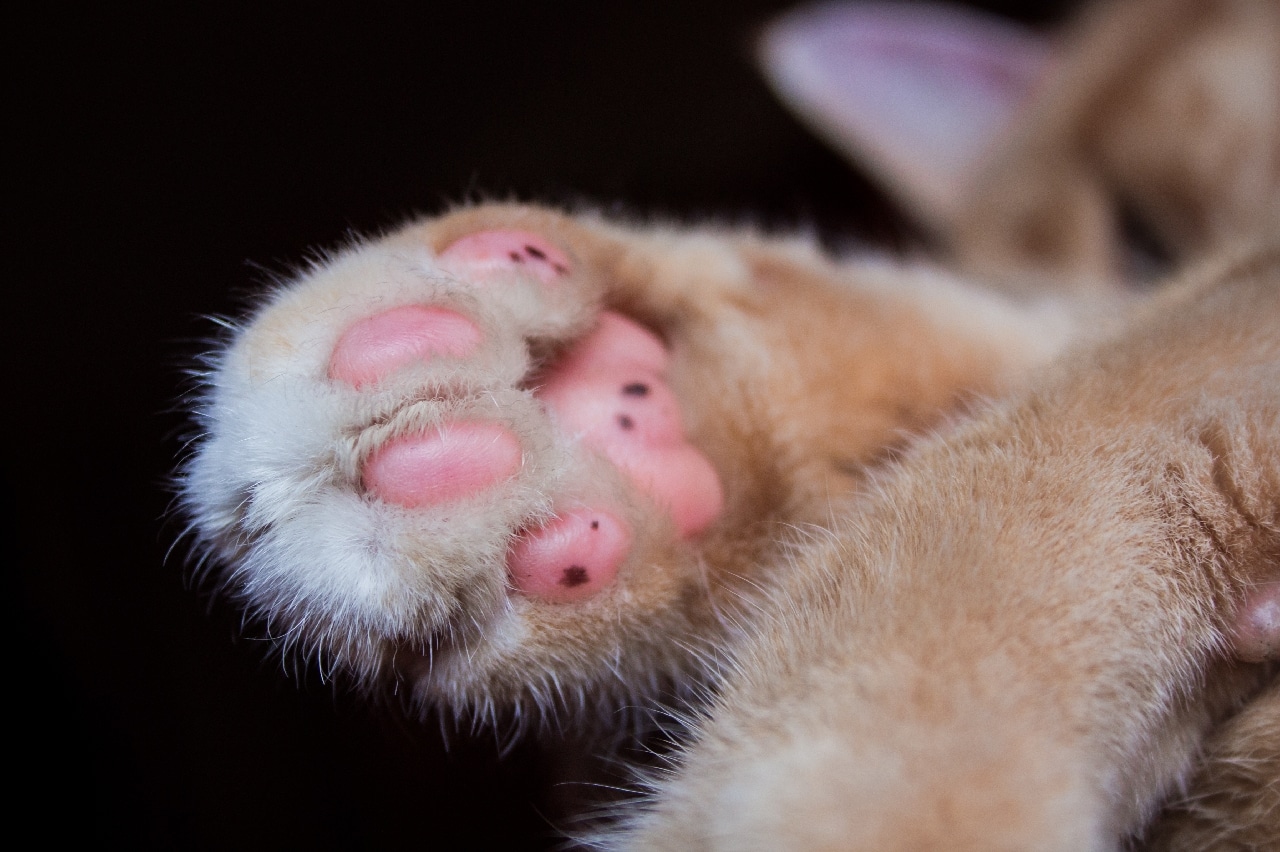
3. Lameness
Your cat will likely limp immediately following a declaw surgery, but they might also develop signs of lameness weeks, months, or even years later. Remodeling changes within the paws can lead to arthritic changes over time.
Some cats end up with bone fragments left at the declaw sites, a sad fact that is even more common with the use of the guillotine method.
Declawing can alter the way your cat walks, leading to back pain. Over time, your cat might have trouble jumping on and off the couch or walking across your den.
4. Behavioral Issues
PetMD points out several possible behavioral issues that may come about secondary to declawing. It’s important to understand that there’s a lot of debate in the veterinary community about whether declawing causes these issues, is roughly associated with them, or is entirely unrelated.
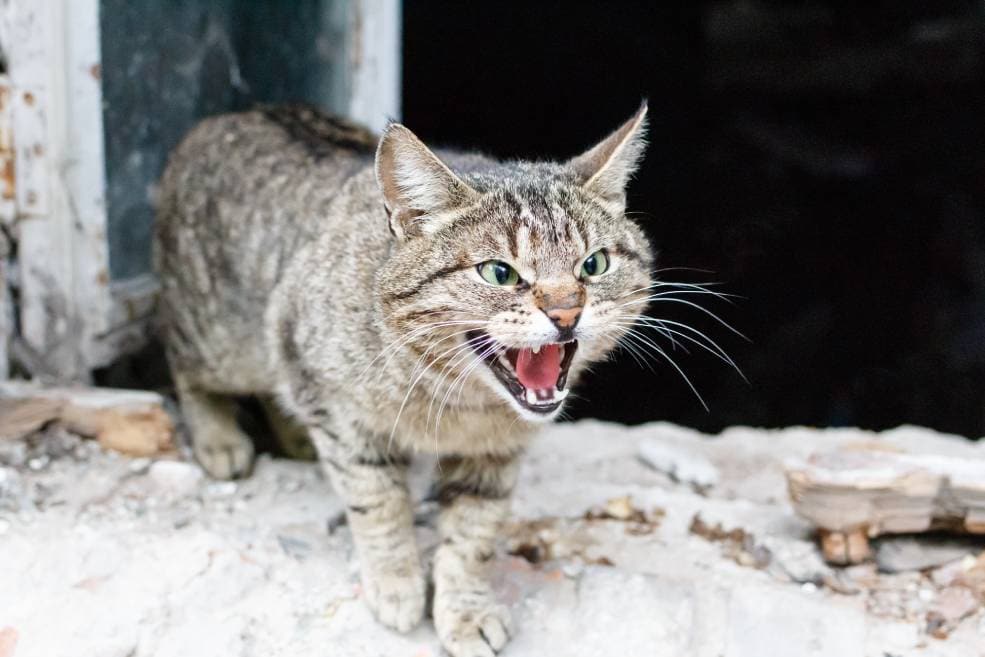
Alternatives to Declawing Your Cat
The good news is that there are some great alternatives to declawing your cat. These methods help preserve your cat’s natural instincts and protect your furniture.
Provide Appropriate Surfaces
Keep in mind that you don’t want to simply stop your cat from scratching because scratching is a natural behavior. Instead, you’ll need to provide your feline family member with appropriate things to scratch on.
City Way Animal Clinics points out a helpful tip: evaluate what your cat is already scratching on or trying to scratch to see what areas they go to and what surfaces and textures they prefer. Put acceptable items in those areas, such as a cat tree by your couch. You may need to try different styles and textures because some cats may prefer cardboard, while others prefer sisal.
Feliscratch
You can get a pheromone product called Feliscratch, made by the same company that makes Feliway. Feliscratch’s pheromone is identical to the pheromones that cats release from their paws when they scratch on surfaces.
You apply this pheromone product to surfaces you want your cat to scratch, such as a scratching post or cat tree. It helps increase the likelihood that your cat will scratch in that area and hopefully leave other areas alone.
Catnip
Catnip is another great option if your cat is attracted to it. You can sprinkle a helping of dried catnip on your kitty’s scratching post to draw them to the object.
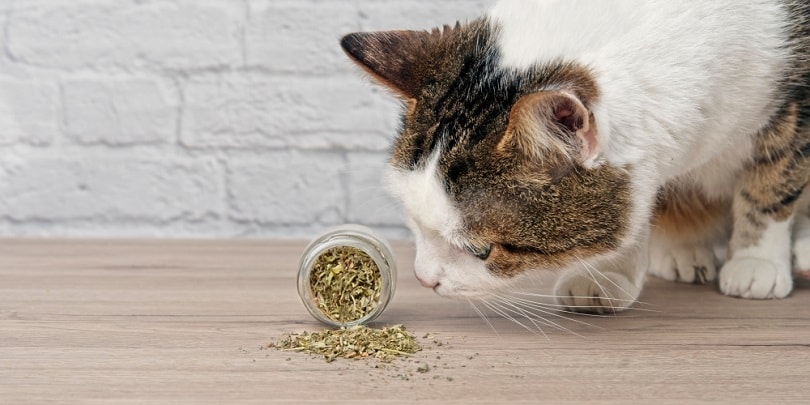
Use Deterrents
Some people have luck temporarily deterring their cat from surfaces that they like to scratch but shouldn’t, such as your couch. Commonly used materials include:
If using deterrents, make sure to provide an appropriate scratching surface for your cat to use.
Nail Caps
You can regularly trim your cat’s nails and consider nail caps, such as Soft Paws. These caps help prevent damage if your cat claws at you or a surface. If you’re uncomfortable applying the nail caps, talk to your veterinary hospital to see if it’s a service they offer.
Remember, when using nail caps, you will need to replace them. Sometimes, they don’t come off on their own, so you’ll need to trim them to ensure they don’t embed into your cat’s paws as they grow out. (It’s rare for that to happen, but not impossible.)
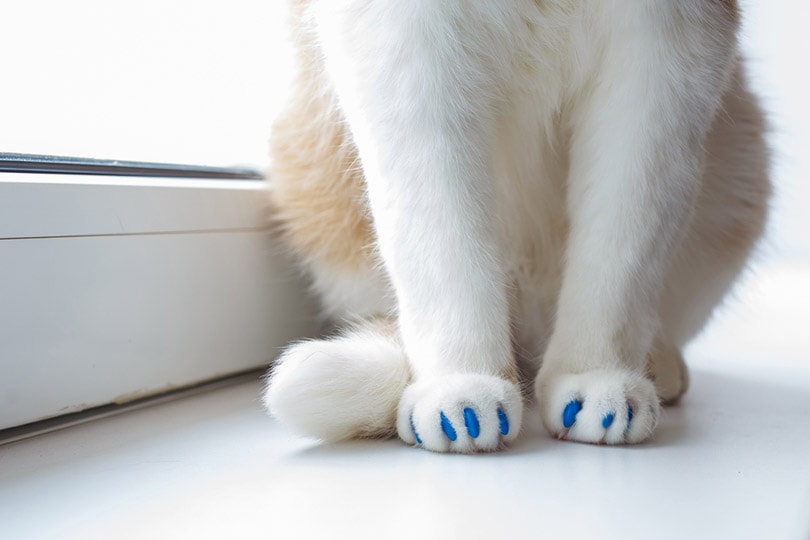
Positive Reinforcement
The best way you can work with your cat to curb destructive or inappropriate scratching behaviors is by using positive reinforcement. Offer rewards when your kitty uses a scratching pad, from praise to a treat. You may need to redirect the behavior toward more desirable surfaces, but don’t yell at your cat or swat at them. That can damage your bond and scare them.
Regular Nail Maintenance
Keeping your cat’s claws trimmed is likely the ost effective way of avoid unwanted scratching and damage to your belongings. Reach for your clippers once every two weeks to keep over-grown and extremely sharp nails at bay!
When it comes to at-home cat nail care, we like Hepper's Cat Nail Clipper Set because it has it all: two sizes of well-designed and made clippers, a nail file, and a handy carrying pouch. The clippers even have built-in safety guards and locking switches to keep both hooman and kitty calm, and the blades are made of sturdy, easy-to-clean stainless steel when the job's done.
At Pet Keen, we've admired Hepper for many years, and decided to take a controlling ownership interest so that we could benefit from the outstanding designs of this cool cat company!
Frequently Asked Questions (FAQ)
Can enrichment help cats with destructive scratching behaviors?
Providing plenty of enrichment opportunities for your cat can improve their mental and physical health and the human-animal bond. If your cat is bored, they’re more likely to act out. They may also become less active, leading to weight gain and increasing the likelihood of diseases such as diabetes.
Provide ample resources for your cat and look at ways to encourage healthy behaviors. Puzzle toys help stimulate your cat’s brain. Interactive toys can encourage exercise, and bonding with you. You can create new surfaces in your house to provide hideaways and places to explore; even a simple tunnel purchased from the pet store can give your cat a new area to play in.
Is declawing illegal?
Declawing is illegal in several cities, states, and countries. New York was the first state to ban declawing within the United States. The state passed the legislation in 2019.
As of 2023, Maryland and Washington, D.C. have also banned declawing. Some cities that have made declawing illegal include:
Conclusion
Declawing is a controversial practice, and many veterinarians advise against it. Declawed cats may have chronic pain and develop arthritis that can plague them for the rest of their lives. Talk to your veterinarian about other options if your cat shows signs of destructive scratching.
Featured Image Credit: Kunitsa Yana, Shutterstock









